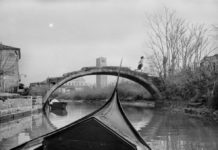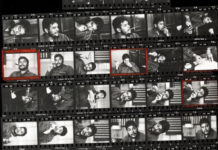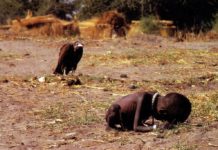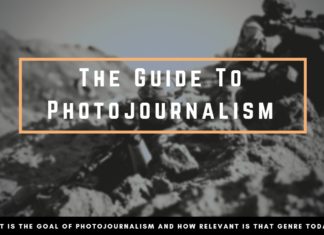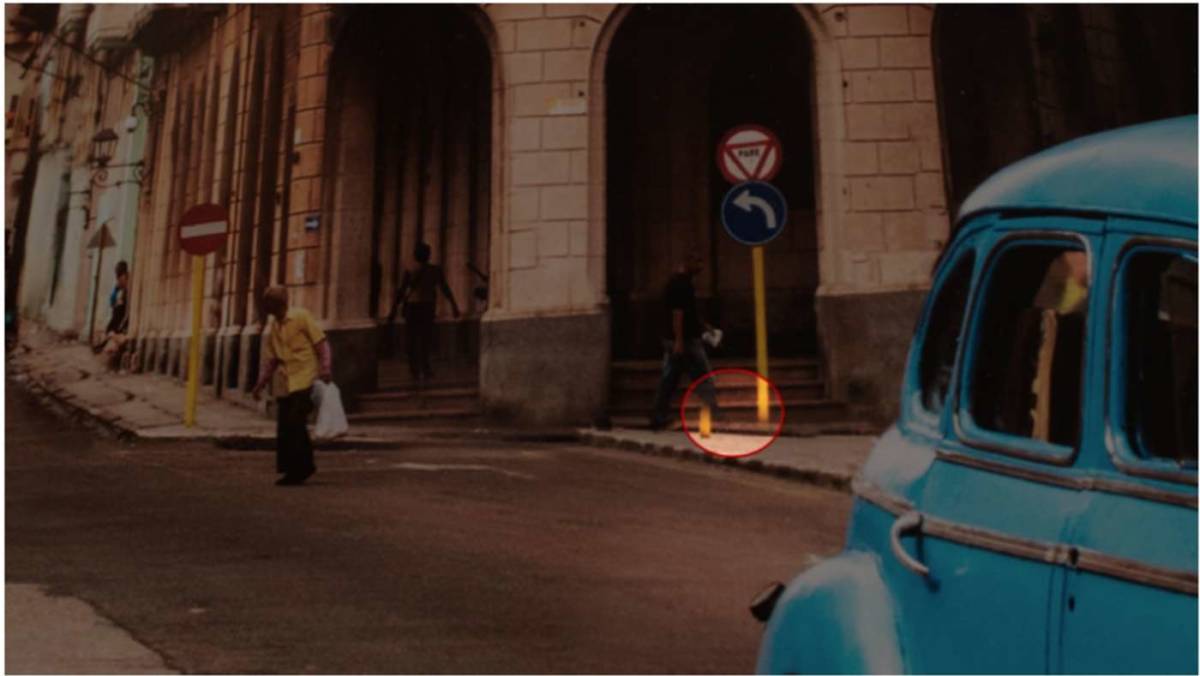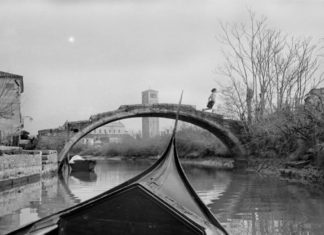Since I have been traveling in Southeast Asia and also planned a more extensive project on the Sulfur miners of Mount Ijen, I have become more interested in photojournalism and documentary photography. After visiting the locations taking pictures there, I realized that getting great photographs that are worthy of a photojournalism series is more difficult than I thought. While looking at Photojournalism examples, there is such a disparity between their level of quality and mine, that I realized I still have a lot to learn.
Which is totally fine and I am happy to see the fields where I still have a lot of room for improvement. It can be very rewarding to power through these and you can always use websites like Essaywritingservice if you need a helping hand. Watching great examples of photojournalism is a good way of gathering inspiration and becoming a better photographer overall.
In this article, I want to present my favorite photojournalism examples and present photographs that tell a strong story.
Photojournalism Captions
Captions are a field that I haven’t put much thought into. Normally I just give my photographs a title and the place where the photograph has been taken.
Photojournalism is a bit different in this field, as the caption can help to understand the circumstances under which the photograph has been created. Usually, I am a strong advocate that a good photograph stands on its own merit and doesn’t need an explanation. But since photojournalism should be about the truth and not be vague, captions in photojournalism can help to understand the context of a picture.
The caption should be precise and describe what is not visible in the photograph. Adding value to understand the context of the photograph should be one of the primary tasks of the caption. Therefore, the caption shouldn’t repeat what is already shown but give some background.

For future reference, information like the date and place are also helpful in understanding the story of the photograph. Be specific about the information and not too excessive. The caption for a photojournalism photograph should be as short as possible while providing all the useful information that are really needed.
In the following Photojournalism Examples, the caption will only be about the photographer and the image itself. The photograph will then be accompanied by a short description, rather than a caption.
Where to Find Photojournalism Examples
Finding photographs that fall into the photojournalism category isn’t exactly easy when You search for it on the usual channels where You are probably searching for Street Photography as well.
Social Media isn’t really great for finding Photojournalism work. Most of the photojournalists aren’t really popular, with tenth of thousands of followers, but are more focused on photography than building up their social media presence.
Interesting agencies that You should follow are:
Magnumphotos | Instagram | Website
I hope I don’t have to explain what Magnumphoto really is, but to make it short, they are the most influential agency of the 20th century and continue to produce great series.
On their Instagram account which has more than 2.7million followers, they present contemporary photojournalism photographs, as well as classics from their archives.
Lensculture | Instagram | Website
When it comes to websites dedicated to photojournalism series and projects, Lensculture is one of the first addresses to look for. Although I am not a fan of their competition businesses, the series that they feature on their website are normally of the highest of qualities.
NOOR | Instagram | Website
Similar to Magnumphotos, Noor is a collective of one of the best photojournalists out there, documenting the world. In addition to the photographs, they also provide some background informations and insights into their work as a collective on their Instagram account.
Other than that, there are more than enough other ways to see these kinds of photographs. If You are following the news, some of the examples that I present may not be new to You, even if You might not be interested in the genre itself.
The World Press Photo Foundation
One of the best sources for photojournalism examples are the world press photo awards.
They are presented every year and one my favorite awards and exhibitions to visit. When we talk about Photojournalism, there is always the connotation of human suffering or war.
But Photojournalism is much more than documenting crisis areas or producing series depicting the negative sides of life.
Have a look at the 11 categories of the World Press Photo Award for 2018.
Contemporary Issues
Single pictures (CI) or stories (CIS) documenting cultural, political or social issues affecting individuals or societies.
Environment
Single pictures (EN) or stories (ENS) documenting human impact, positive or negative, on the environment.
General News
Single pictures (GN) or stories (GNS) reporting on news topics and their aftermaths.
Long-Term Projects
A project on a single theme that has been shot over at least three different years.
Nature
Single pictures (NA) or stories (NAS) showing flora, fauna, and landscapes in their natural state.
People
Single pictures (PO) or stories (POS) of individuals or groups either in observed or posed portraits.
Sports
Single pictures (SP) or stories (SPS) that capture individual or team sports.
Spot News
Single pictures (SN) or stories (SNS) witnessing news moments or immediate events.
Especially Nature and Sports category are a nice change, with amazing photojournalism examples.
20 Photojournalism Examples

The first Photojournalism example looks like a movie still but shows real people in front of a coal power plant.
Smoke billows from stacks as men push a tricycle through a neighborhood next to a coal-fired power plant in northern Shanxi province.
About Kevin Frayer
He is an award-winning Canadian photojournalist based in Asia working for Getty Images.
His photographs have been widely published in leading newspapers, magazines and internet sites around the world.
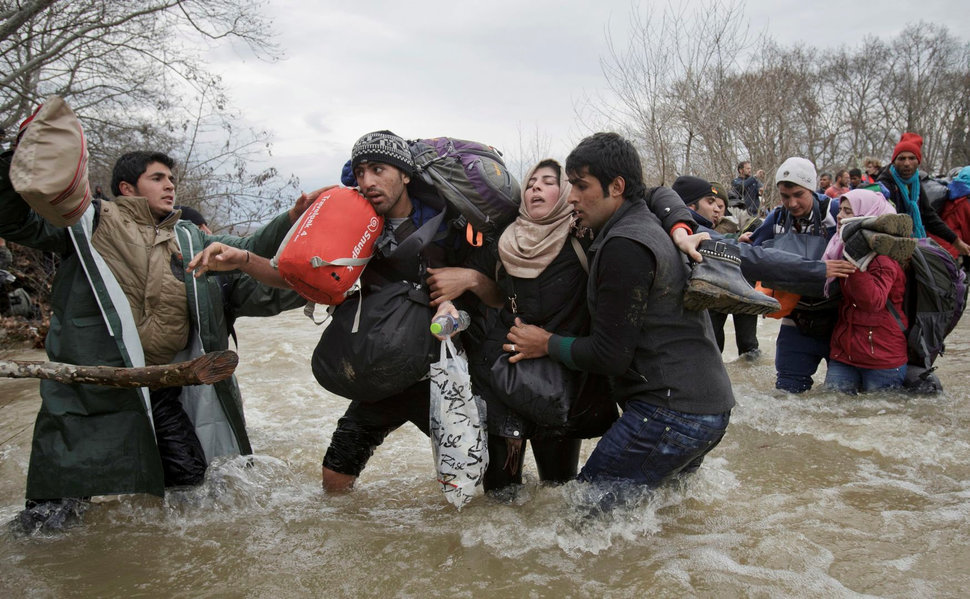
The refugee crisis might have cooled down a little bit, over the winter months, but in March of 2016, the crisis was at its worst. Here, refugees try to leave an overcrowded Greek refugee camp to reach Macedonia.
About Vadim Ghirda
He joined the AP in 1990 at the age of 18 as communism was collapsing across Central and Eastern Europe. Ghirda started by covering the complex social and political turmoil generated by the transition from totalitarian rule to democracy. In Romania, civil unrest, miner riots, widespread high-level corruption, the declaration of independence of Moldova from the Soviet Union and a secession war in the Trans Dniester region, in Ukraine the protests before the toppling of Soviet leader Mikhail Gorbachev, all in the early nineties.
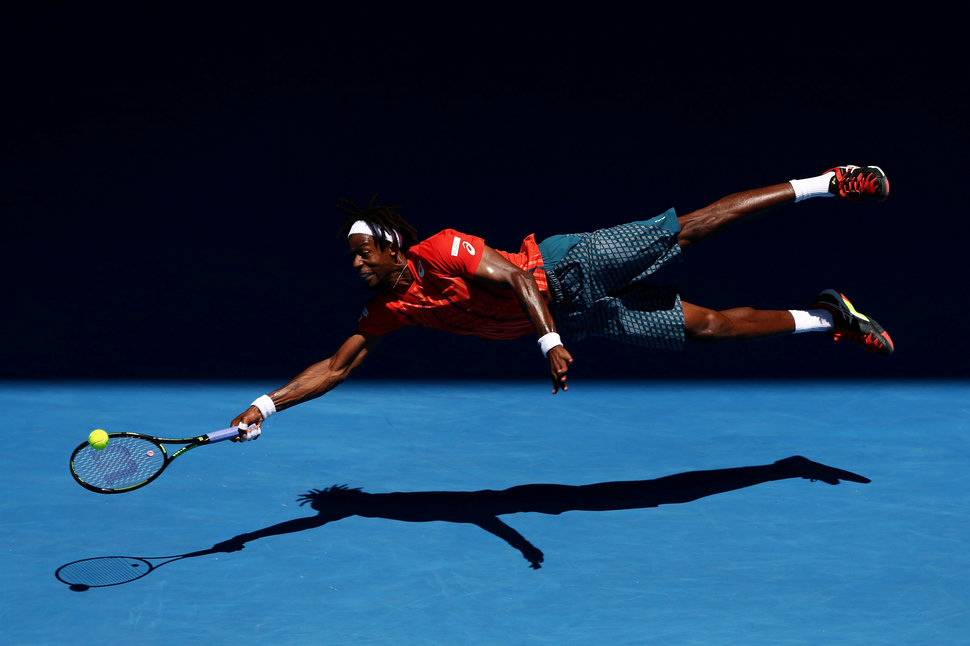
Gael Monfils of France dives for a forehand, during his fourth-round match against Andrey Kuznetsov of Russia, in the 2016 Australian Open tennis championships at Melbourne Park, Melbourne, Australia.
About Cameron Spencer
Cameron is an Australian staff photographer for Getty Images based in Sydney, Australia, that specializes in photographing sport and portraiture.
After attaining a bachelor’s degree in visual communication and majoring in photography, Cameron began his career working as an assistant and freelance photographer.
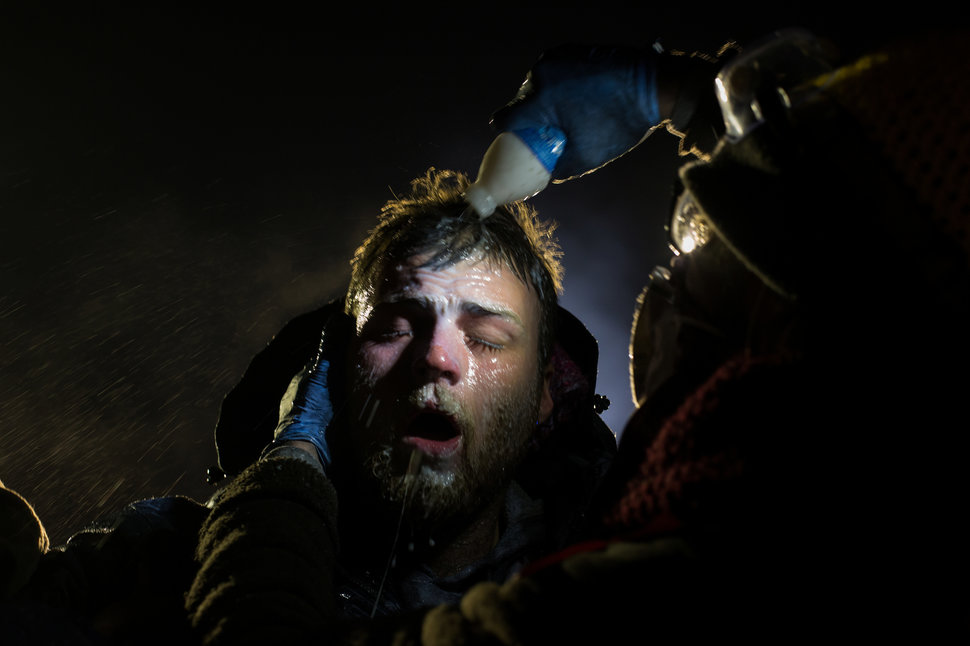
A protester is treated after being sprayed with pepper spray at a police blockade on Highway 1806.
The Dakota Access Pipeline (DAPL) is a 1,886-kilometer-long underground oil pipeline project designed to transport oil from North Dakota to a shipping terminal in Illinois, USA. By 2016, most of the pipeline was complete, but the section closest to the Standing Rock Sioux reservation still awaited federal approval.
About Amber Bracken
She is a member of Rogue Collective and lifelong Albertan covering assignments across the province and farther from home.
After getting her start as a staffer in daily newspapers, she has moved on to a freelance career and the pursuit of long-term projects. She has since worked with many clients, including The Globe and Mail, BuzzFeed, Reuters, Maclean’s, The Canadian Press, Postmedia and Canadian Geographic.
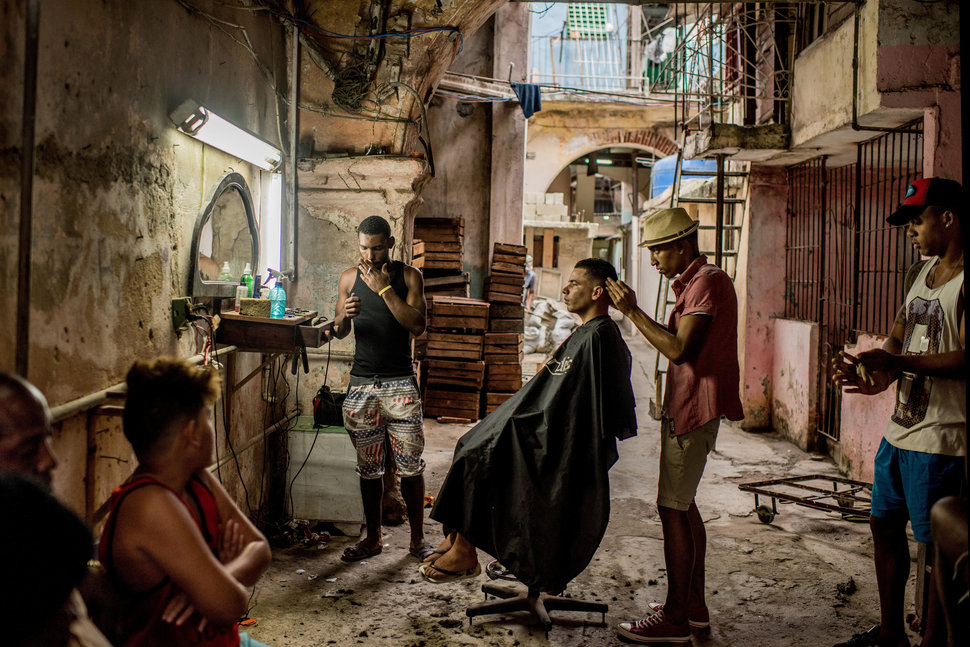
A barber’s shop in Old Havana.
Fidel Castro, Cuba’s former president and leader of the Communist revolution, died on 26 November. Mourning was fervent and public across the country. The mourning period lasted nine days, after which Castro’s ashes were taken on a route that retraced, in reverse, the steps of his victorious march from Santiago to Havana in 1959. Thousands turned out to watch the procession pass. Castro left a Cuba with much-admired education and healthcare systems, but one where a longstanding US economic embargo had led to shortages of basic supplies and widespread disrepair.
About Tomás Munita
Tomás Munita, born in 1975, is a freelance documentary photographer with a primary interest in social and environmental issues.
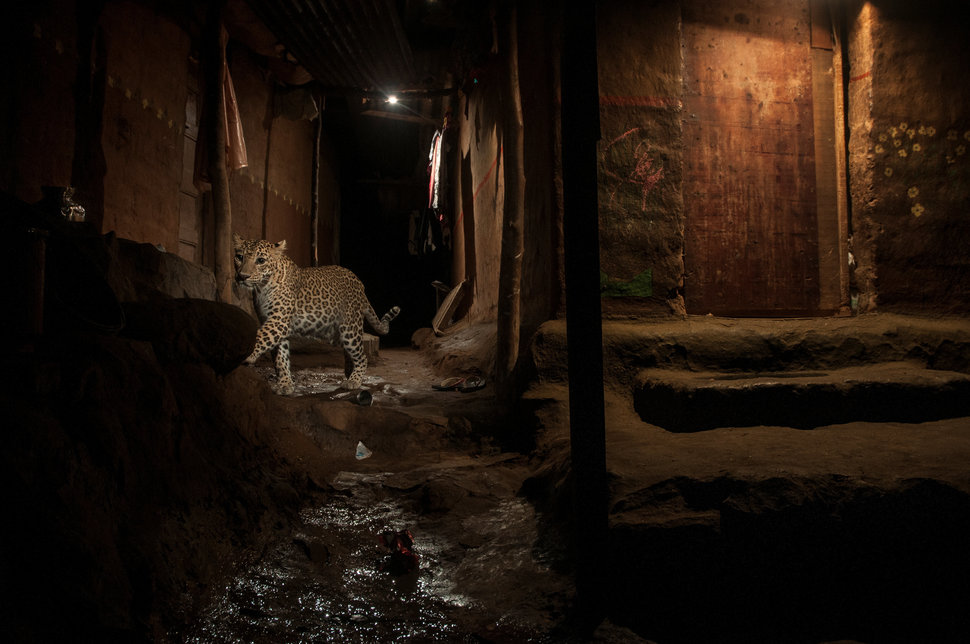
A leopard walks at night through Aarey Milk Colony, a residential, recreational and farming settlement adjacent to the Sanjay Gandhi National Park, in suburban Mumbai.
About Nayan Khanolkar
He is a self-taught avid nature photographer, who has been traveling the length and breadth of India to document Indian wildlife for over a decade and a half.
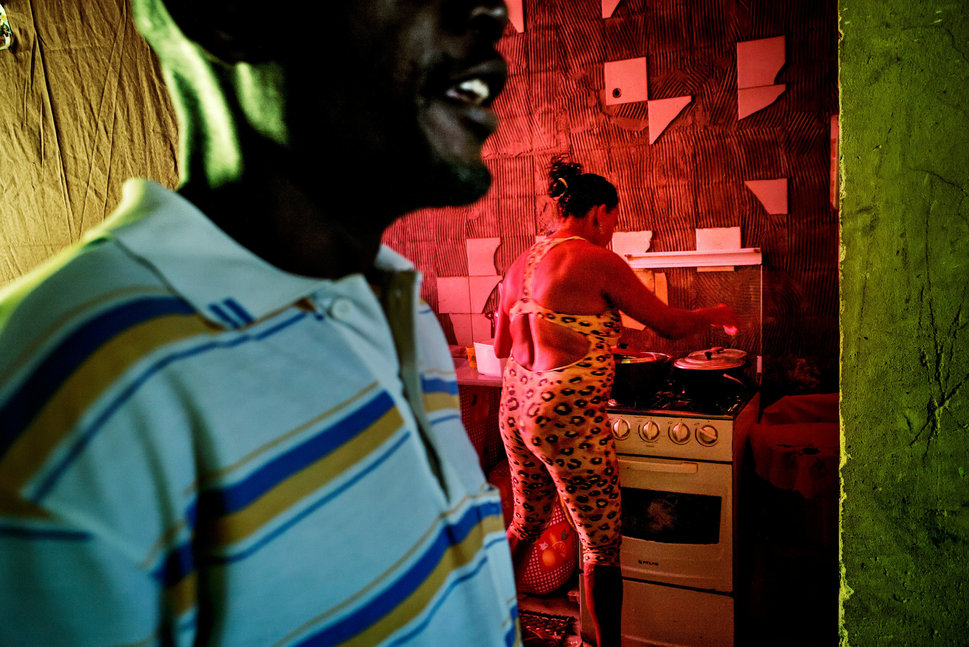
Domingo (foreground) came to Brazil from Angola in search of a better life and lives with Lourdes (cooking) and her five children in one of the occupied buildings.
About Peter Bauza
He is a German photographer within the documentary and storytelling world.
After graduating in international commerce, he first pursued a career for an international company, which took him to several countries where he also developed his visual language. He is very committed to social and geopolitical issues related to conservation, global health, diminishing cultures, sustainability and the environment. He resides between South America and Europe for now more than 20 years, frequently also traveling to Africa. His life-long respect for multicultural viewpoints fueled by the fluency in five languages also afforded him opportunities.
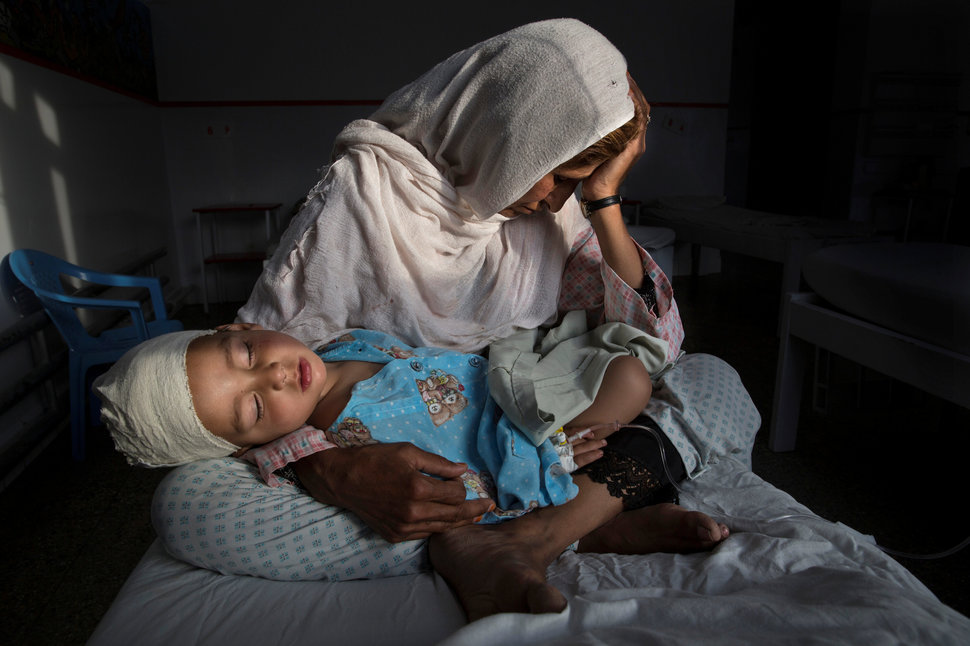
Najiba holds her nephew Shabir (2), who was injured in a bomb blast that killed his sister, in Kabul, Afghanistan, in March. The bomb exploded in a relatively peaceful part of Kabul while Shabir’s mother was walking the children to school.
About Paula Bronstein
She is a freelance photographer based in Bangkok, Thailand specializing in the Asian region.
Her work reflects the eye of a dedicated humanitarian and conflict photojournalist. With over 30 years of experience in the news business, Paula worked as staff for a variety of US newspapers for 14 years before moving overseas. She then went on to work for Getty Images newswire as a staff photographer from 2002-2013 covering stories globally, later was represented by Reportage by Getty Images.
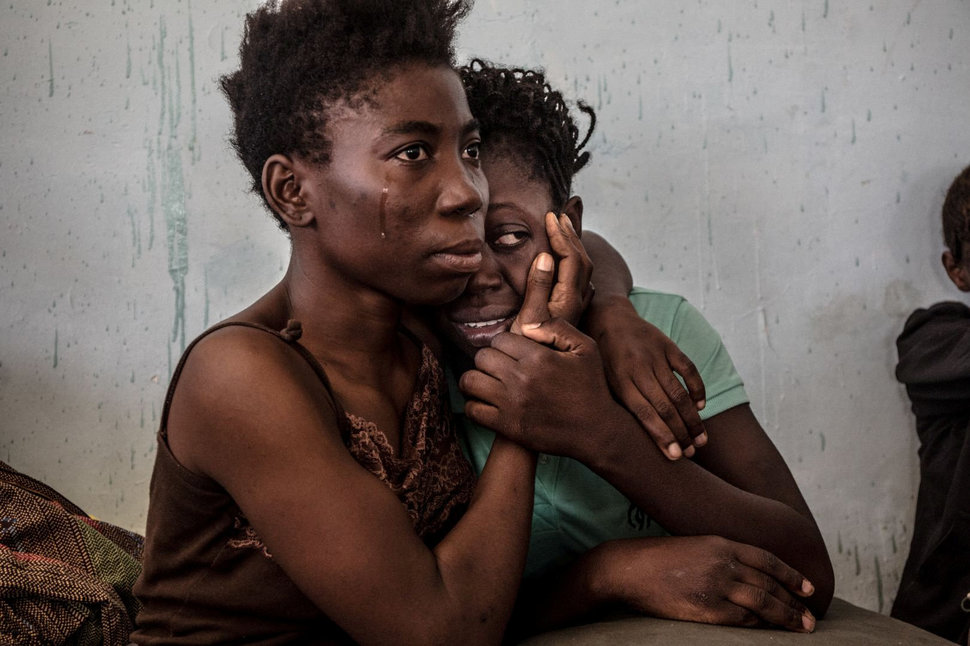
Nigerian refugees cry and embrace in a detention center housing hundreds of women in Surman, Libya.
Refugees in such centers face indefinite detention. Many report sexual and physical violence, and insufficient food and water. A large number try to reach Europe by being smuggled over the Mediterranean Sea.
About Daniel Etter
He is a photographer and feature writer.
He moved to India in 2010, where he began exploring social inequality, with a particular focus on child labor. Since 2012, he has reported extensively on migration and refugee issues along Europe’s external borders and conflict zones across the Middle East.
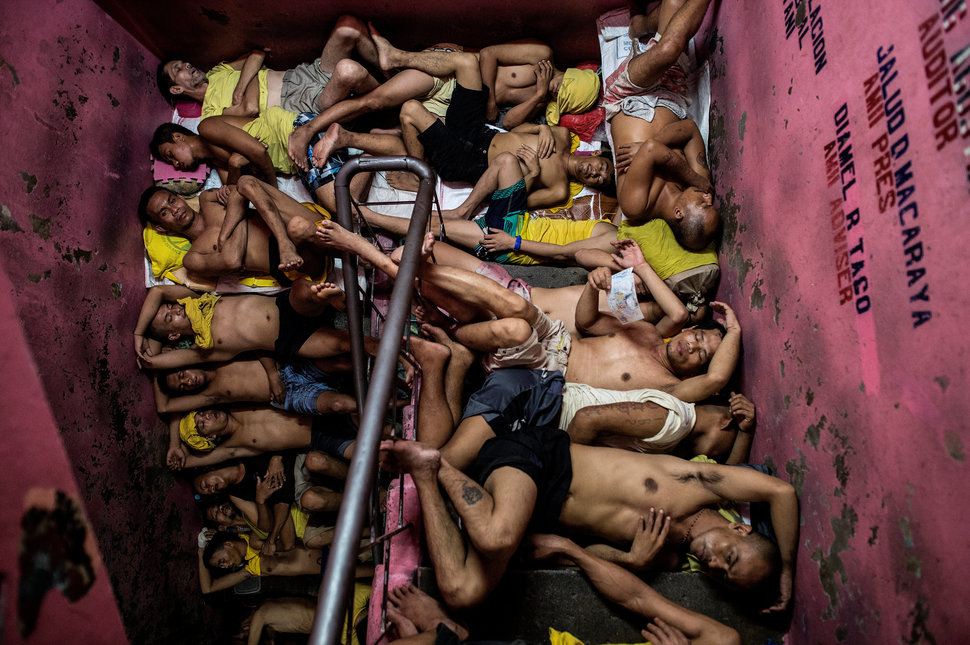
Prisoners sleep on a staircase inside the Quezon City Jail, at night in Manila, Philippines. The jail was built in 1953 to house 800 people, though the UN says it should accommodate no more than 278. In August, Time reported that there were some 3,800 inmates at Quezon.
About Noel Celis
He is a Manila-based photojournalist from the Philippines.
Noel ventured into news photography for two local newspapers, The Manila Times in 2005 and The Manila Bulletin in 2007, covering different beats like police, sports, and lifestyle. In 2009, Noel joined AFP as a photo correspondent where he was able to shoot disasters like typhoon Ketsana. He was among the first photographers to arrive immediately after Typhoon Haiyan hit the Philippines.

In This Photojournalism Example, Investigators examine the scene after Romeo Joel Torres Fontanilla was killed by unknown gunmen riding motorcycles.
President Rodrigo Duterte of the Philippines began a concerted anti-drug offensive soon after taking office on 30 June. During his presidential campaign, Duterte and senior officials had linked high national crime rates with drugs: an approach popular with voters dissatisfied with the political establishment and its failure to tackle poverty, crime, and corruption.
About Daniel Berehulak
He is an independent photojournalist based in Mexico City.
A native of Sydney, Australia, and a regular contributor to The New York Times, he has visited more than 60 countries covering history-shaping events, including the Iraq and Afghan wars, the trial of Saddam Hussein, Ebola’s spread in West Africa and most recently the war on drugs in the Philippines. He focuses on news and social issues and on those affected.
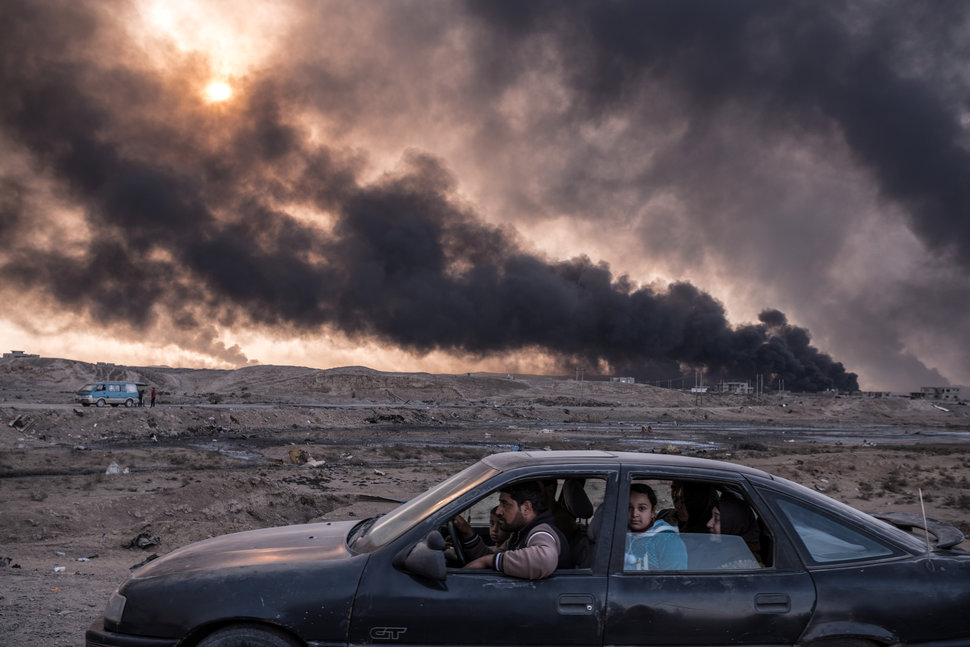
A family flees Mosul, as oil fields burn in Qayyarah, 60 kilometers south of the city.
The Iraqi Special Operations Forces (ISOF), backed by the US and coalition forces, began an offensive to retake Mosul from the Islamic State group (IS) in October. IS had been entrenched in Mosul for more than two years. The Iraqi government initially dropped leaflets over the city, asking residents to stay in their homes. Many people were caught in the crossfire, but some chose to escape.
About Sergey Ponomarev
He is a freelance photographer best known for his photojournalism works depicting Russian daily life and culture as well as news images from the Libyan uprisal.
Before becoming a freelancer in 2012, Sergey worked for the Associated Press starting in 2003.
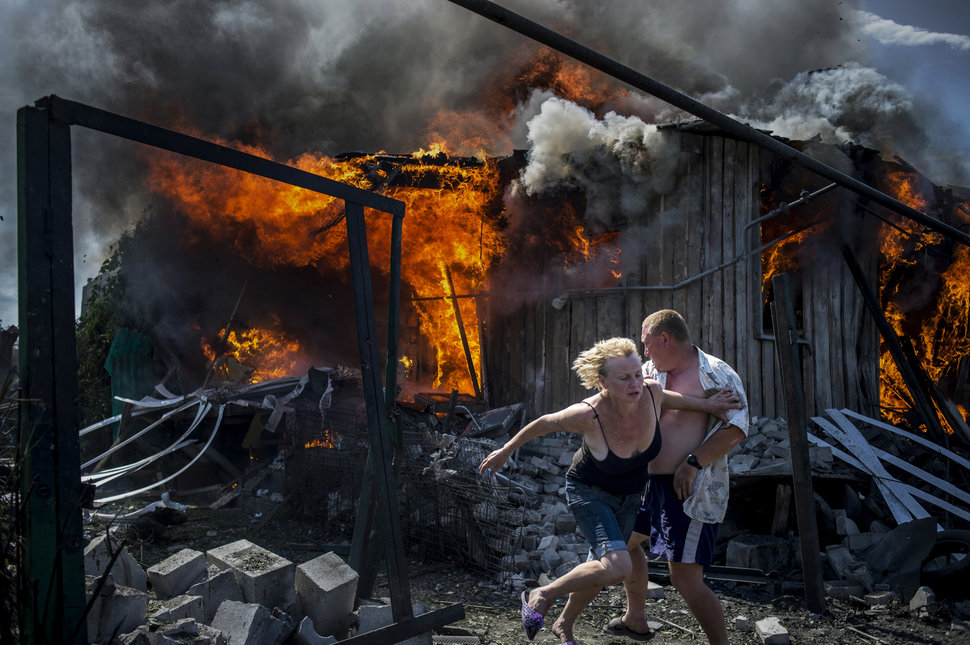
Civilians escape from a fire in a house hit during an air attack, in the village of Luhanskaya, Luhansk.
Donetsk and Luhansk are two self-proclaimed, pro-Russian ‘People’s Republics’ in the Donbass region in easternmost Ukraine. A 2001 government census showed that 74.9 percent of the population in the Donetsk region and 68.8 percent of the Luhansk region have Russian as a mother tongue.
About Valery Melnikov
Born in Nevinnomyssk, Valery Melnikov studied journalism in Stavropol, Russia.
His photographic career began when he started to work for The North Caucasus newspaper. For 10 years, he was a staff photographer for Kommersant publishing house and since 2009 for international news agency Rossiya Segodnya/Sputnik.
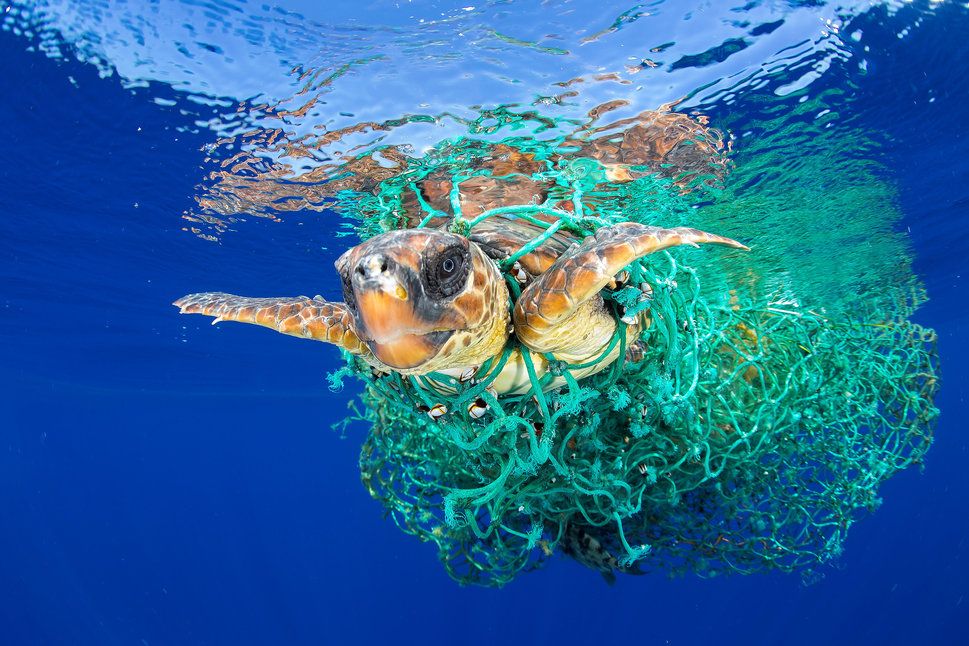
A loggerhead sea turtle swims entangled in abandoned fishing gear, off the coast of Tenerife, Canary Islands, in the northeast Atlantic Ocean.
The loggerhead is classed as a ‘vulnerable’ species globally by the International Union for Conservation of Nature, but the northeast Atlantic subpopulation is listed as ‘endangered’. Entrapment in nets intended for other species, and in gear left abandoned by fishing boats is the prime threat to marine turtles, followed by human consumption of meat and eggs, and coastal development affecting their habitat.
About Francis Perez
He was born in the Canary Islands and started in underwater photography taking pictures of the seabed in Tenerife.
As a freelance professional underwater photographer, he focuses on the submarine world with a unique style. His pictures show his own point of view in places such as Indonesia, Red Sea, Malaysia, South Africa, Mozambique, Philippines, Micronesia, Galapagos Islands, Mexico, Chile and Canary Islands, where he has focused on cetaceans.
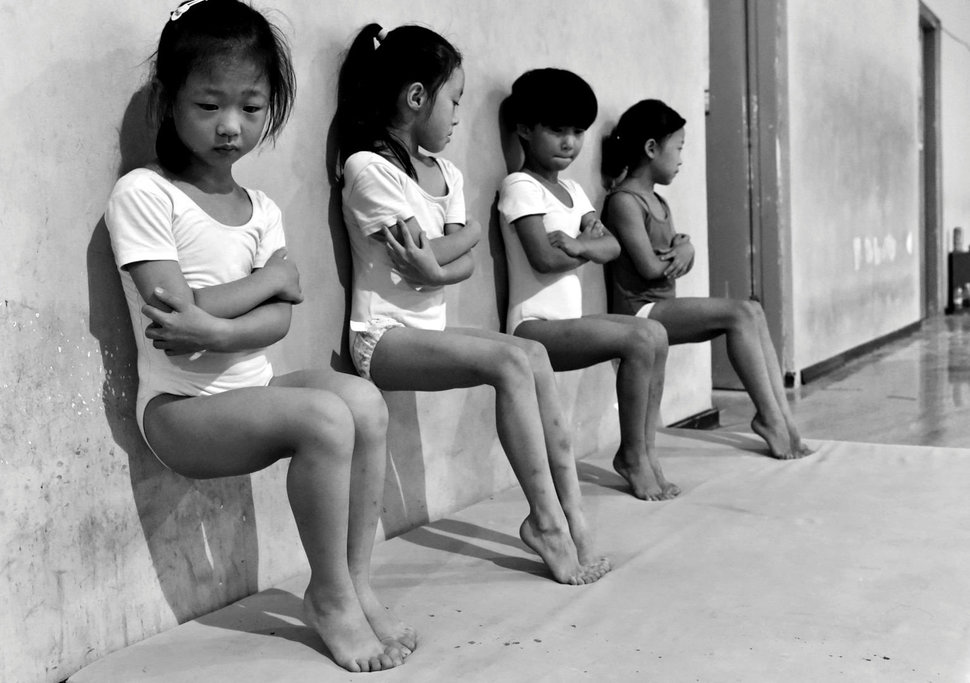
Students of a gymnastics school in Xuzhou, China, do toe-pressure training for 30 minutes in the afternoon.
About Tiejun Wang
He was born in 1964 in Xuzhou, Jiangsu, China.
He is the vice president and general secretary of Xuzhou Photographers Association and is a member of China Photographers Association. He has been studying and practicing the art of photography for over 30 years, and more than 3,000 images accepted and partly awarded at competitions at home and abroad.
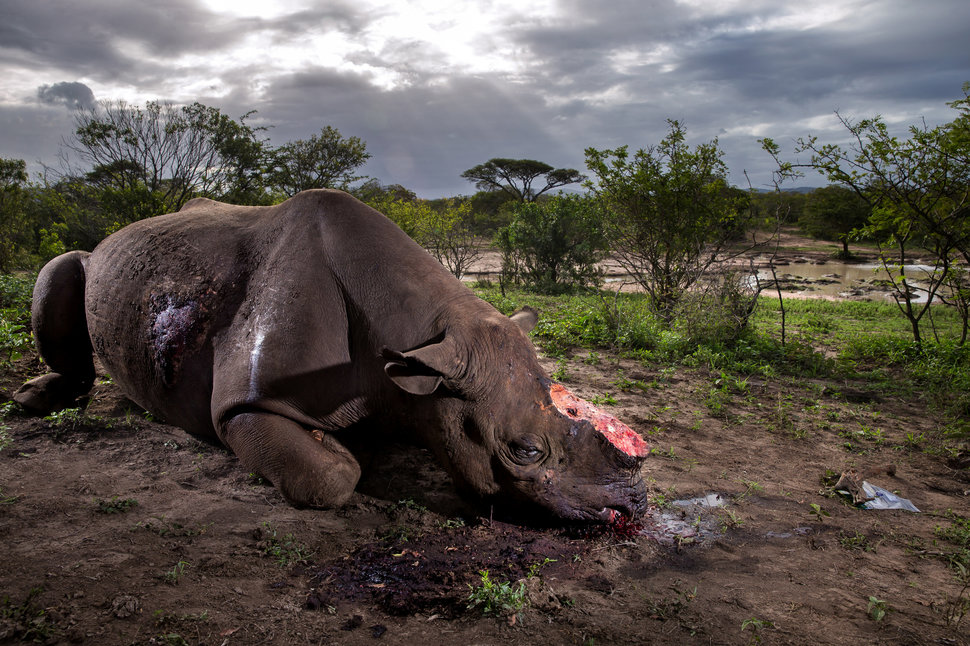
A black rhino, poached for its horn, is found dead at Hluhluwe Umfolozi Game Reserve, South Africa. It is suspected that the killers came from a local community approximately five kilometers away, entering the park illegally, shooting the rhino at a waterhole with a high-powered, silenced hunting rifle.
About Brent Stirton
He is the senior correspondent for Getty Images and Verbatim Photo.
He does most of his work for National Geographic Magazine, Human Rights Watch, Le Figaro, GEO and other international titles.
Brent shoots issues related to the environment, to diminishing resources and on global health issues. His commercial clients include Coke, Nike, and Novartis, amongst others.
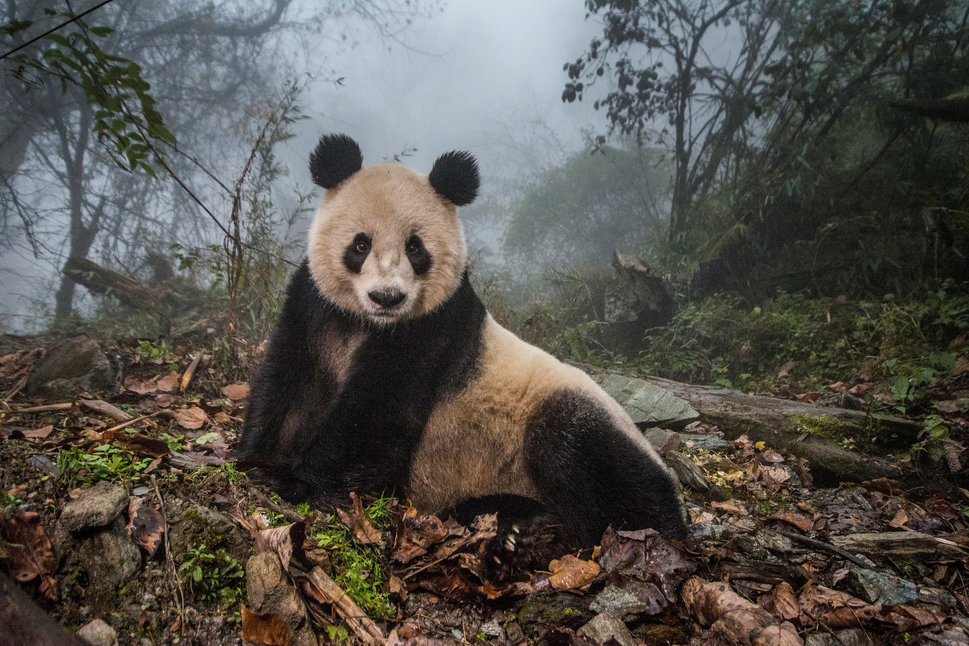
Ye Ye, a 16-year-old giant panda, lies in a training enclosure at the Wolong reserve, Sichuan, China. Her cub, Hua Yan was released into the wild after three years of training.
About Ami Vitale
Her journey as a photographer, writer and filmmaker has taken her to over 90 countries where she has witnessed civil unrest and violence, but also surreal beauty and the enduring power of the human spirit.
She has lived in mud huts and war zones contracted malaria, and donned a panda suit—all in keeping with her philosophy of “living the story.”
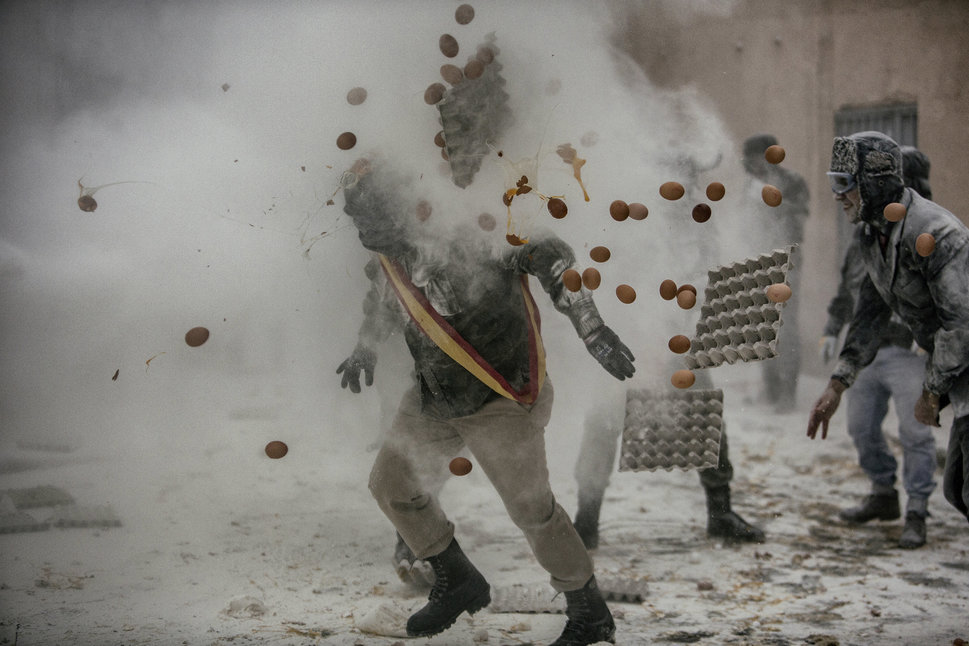
Each year on 28 December, residents of Ibi in Spain stage a mock military coup, pelting each other with flour and eggs and letting off firecrackers. A group of men, ‘Els Enfarinats’ (The Floured Ones) take control of the town, pronouncing ridiculous laws and fining citizens who infringe them. Another group, ‘La Oposicio’ (The Opposition) tries to restore order. At the end of the day, the fines are donated to charity.
About Antonio Gibotta
For him, photography is a way to show what’s inside without the use of the words.
It’s a means of expression. He loves traveling and searching for stories. Foreign cultures make him curious. He often looks and takes pictures, of the poor and outcast in order to sensitize people who often look at them with contempt. He wants to spread the sense of solidarity.
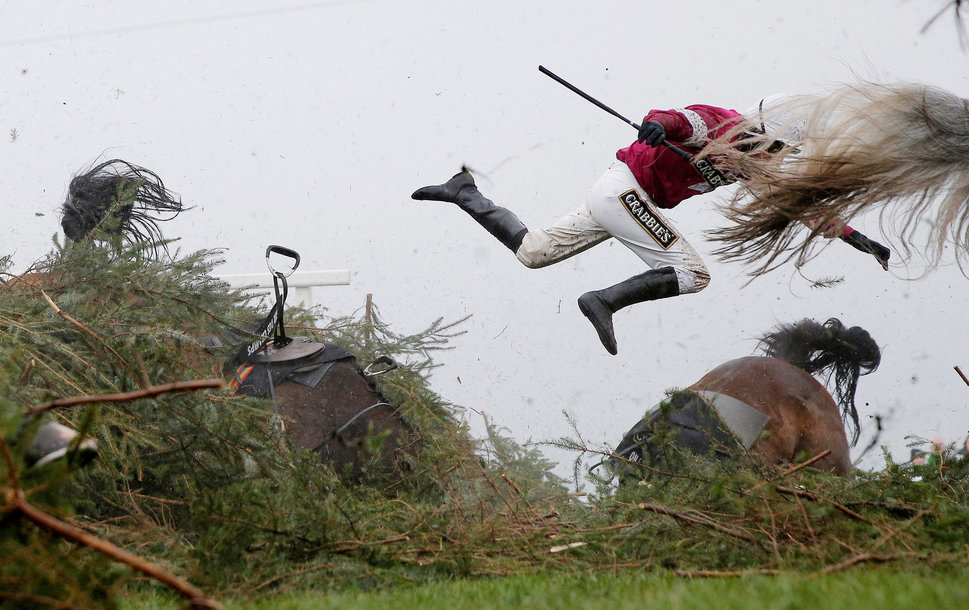
Jockey Nina Carberry flies off her horse Sir Des Champs (left) as they fall at The Chair fence during the Grand National steeplechase, at Aintree Racecourse, Liverpool, UK. A second horse, On His Own (right) also fell at the fence, moments before Sir Des Champs attempted to jump. None of the horses or jockeys involved were injured.
About Tom Jenkins
Tom Jenkins studied documentary photography under Magnum photographer David Hurn in Newport, South Wales, UK.
In 1989, after finishing the course, he freelanced for the sports specialist agency Allsport, as well as The Independent, The Daily Telegraph, The Sunday Telegraph and The Sunday Express. In 1990, Jenkins began to get regular commissions from The Guardian, and when The Guardian Media Group acquired The Observer, from that newspaper, too. Most of his work is sports-based, but he has also covered a variety of news events.
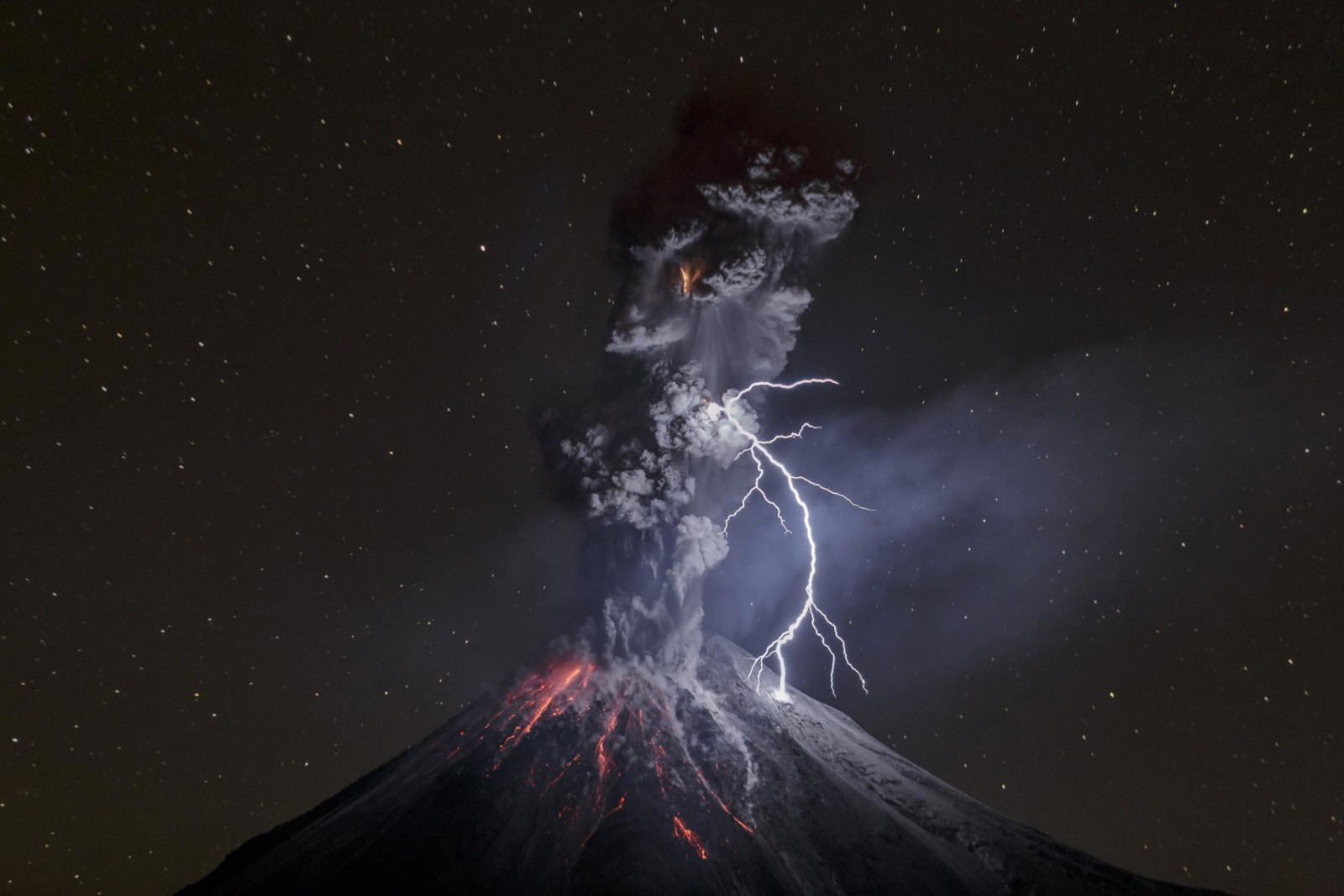
Colima Volcano erupts with rock showers, lightning, and lava flows. The volcano, which is one of the most active in Mexico, showed an increase in activity from July onwards.
About Sergio Tapira
He is a photojournalist, documentary and nature photographer.
He was born in 1971 in the small city of Colima, Mexico. He started documenting Colima Volcano activity in 2002 and alternates his work with photojournalism since 2005.


















